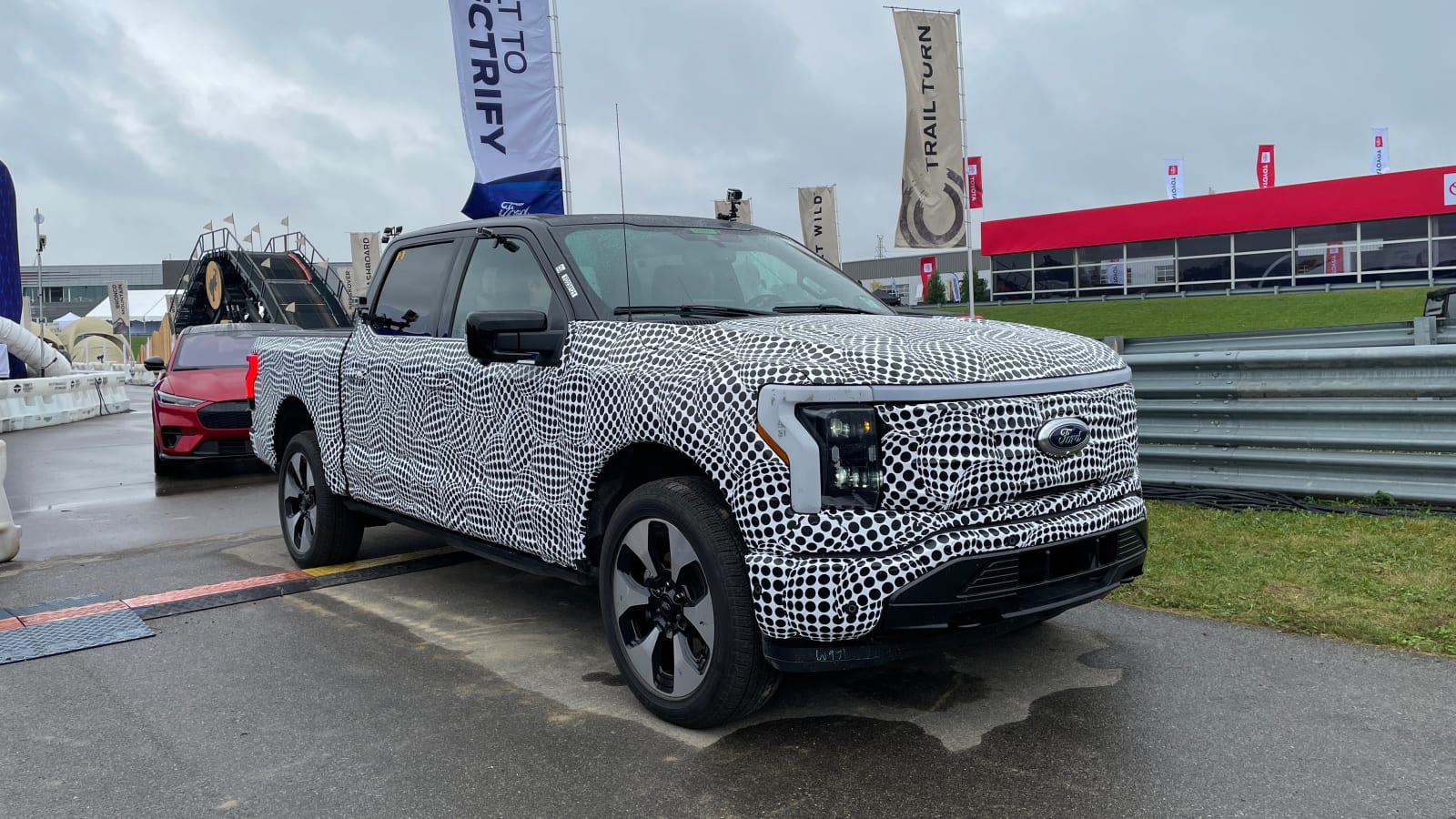PONTIAC, Mich. — “Is this the same truck that Biden drove?” I ask Ford’s spokesperson standing trackside.
“Yes, it is,” he says back with a chuckle.
My ride partner, Autoblog Green Senior Editor John Beltz Snyder, noticed earlier in the day that the numbering on this prototype Ford F-150 Lightning matched that seen on the truck President Biden drove at Ford’s closed test track this year. Unfortunately, our status of not being the president of the United States meant that we were directed to the passenger doors for this Lightning experience.
That’s OK. We’ll have our shot at the driver’s seat soon enough, but today was our first time riding in the Lightning, and it happened to be at a racetrack, specifically a section of the M1 Concourse, home of the Motor Bella auto show.
We can’t say much about how the independent rear suspension rides over rough surfaces, but we can definitely concur with Biden’s comment, “This sucker’s quick.” Our driver, Ford Truck vehicle engineering manager Dapo Adewusi, floored it from a stop, and the rush of electric torque stuck us to the seat backs right away. It’s not the kind of acceleration that’ll blow your mind (as some electric vehicles are capable of), but the speedometer climbs way faster than you’d expect from a full-size pickup.
The sheer torque has staying power, too — Ford rates the extended range (the version we rode in) Lightning at 563 horsepower and 775 pound-feet of torque total from its two electric motors. Steady, hard acceleration continued to just over 70 mph, but it seemed to drop off a bit above highway speeds. We hit 82 mph on the straightaway at M1 Concourse, but Adewusi didn’t stay in the throttle to the very last second, so there’s no way of knowing what the truck feels like above 80 mph.
We were able to get a decent feel for the Lightning’s handling through a number of sweepers and a couple of tighter corners, too. Right off the bat, it’s clear the Lightning and its heavy floor of batteries is nothing like gas-powered full-size pickups through corners. The lower center of gravity keeps the Lightning from feeling tippy or excessively top-heavy, even when you’re pressing the rubber’s limits of adhesion. You can enter corners at greater speed with far more confidence in the chassis than in a gas F-150, and it feels reasonably balanced once you’re in the corner. It handles quite well, and while owners will never take their F-150 Lightnings to the race track (future Lightning owners, please prove us wrong), we’re happy to report that it doesn’t all fall to pieces out there.

